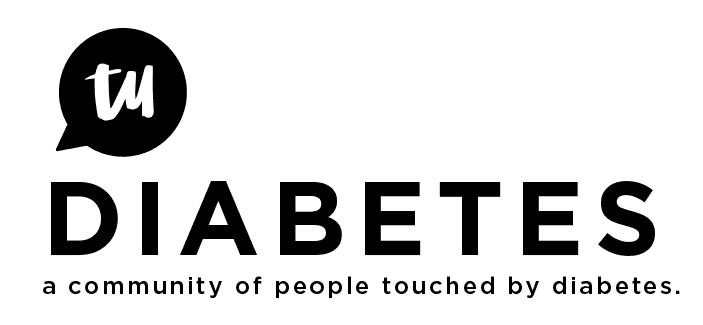Hi Vicki,
On my son Matthew’s first day of preschool last August I tested him post meal (breakfast) when I dropped him off. 316. I hung out to watch his first ½ school day and was dismayed to see him moving about in a haze, not quite all there. That day got me determined to find a way to reduce the spike, not only for his overall health, but so he could have a more normal interaction with his new friends and teacher.
After doing some internet searching I came up with several techniques that have worked wonders. Not only have we been able to reduce Matthew’s postprandial spikes, but we have found that a more stable morning seems to have an effect on and lead to a more stable day. So, this is what we have found to be the most effective methods to reducing the spike.
First, super bolus. To me the pump’s absolute best function is the ability to tailor a basal profile, which we could obviously never do on Lantus, and then set temp basals as required. In general, a super bolus adds “borrowed future basal” to your pre meal bolus. In Matthew’s case he is receiving .25 unit/hr basal during the morning hours. When we bolus for breakfast we add .4 units (80% of his upcoming basal for the next two hours) and the set a temp basal of 20% (.05 unit/hr) for two hours. The “upfront basal” added to the pre meal bolus helps to reduce the spike while not adding to the overall amount of insulin given prior to the next meal. In fact, we have found the following reduced basal aids to slow any drop off/crash prior to the next meal. You can search this site or Google “super bolus” and find all the details you want. Start slow. Make sure the basal profile and I/C ratio you are using are correct first. It will take experimentation with the super bolus to find the numbers that work for you, but it is absolutely worth it.
Second, add some exercise after breakfast. I’m not talking about a big workout at the gym  I take Matthew on a 1/3 to 1/2 mile walk and see a dramatic effect on the spike. On inclement days he loves to box on the Wii, not as good, but it gets him moving. Actually, if he over does the exercise it will make him hypo. At a recent trip to Sky City (think giant bouncers and slides) I removed his pump and still had to feed about 40 carbs, the equivalent of a meal, to keep him from going low. Exercise gets the blood moving and simply makes insulin more effective by enhancing insulin receptor sensitivity. Again, start slow to find out what has the best effect on the spike without going hypo before lunch.
I take Matthew on a 1/3 to 1/2 mile walk and see a dramatic effect on the spike. On inclement days he loves to box on the Wii, not as good, but it gets him moving. Actually, if he over does the exercise it will make him hypo. At a recent trip to Sky City (think giant bouncers and slides) I removed his pump and still had to feed about 40 carbs, the equivalent of a meal, to keep him from going low. Exercise gets the blood moving and simply makes insulin more effective by enhancing insulin receptor sensitivity. Again, start slow to find out what has the best effect on the spike without going hypo before lunch.
Third, pre bolus as much as possible. You seem to be doing 50/50 because of a picky eater. Look back in your logbook and see how many carbs Willow is actually eating. Was her smallest breakfast day 30 carbs? Pre bolus for 30, not 20 and give the remaining 10 or so as soon as she finishes. We pre bolus every meal (unless he starts hypo with a low GI meal). On the rare days he doesn’t finish a meal we give juice to complete the carb load. Just make sure it’s not the only time you give juice. Kids love juice and it won’t take long to figure out the only time they get it is when they don’t eat! An effective table on when to pre bolus in relation to the GI of a meal is in one of the links I added below.
Lastly, Glycemic Index of the breakfast. Like you we have not removed cereal from the breakfast menu (Matthews favorites are Cocoa Puffs, Fruit Loops and Lucky Charms (just how many colorful marshmallows should be in that serving!)) However, we have mixed his cereal 50/50 with a high bran cereal since the day he was dx. The GI of relatively healthy Cheerios is 74, not great if you’re trying to control a spike, but mixed with all-bran (GI 46) and you get a more manageable GI option. Diabetes for kids is hard enough, the least I can do is try and give him what he likes, within reason of course. Use the other techniques above to control the spike and let a kid be a kid at breakfast.
One of the best sources I found in our quest to reduce Matthews spike is from Gary Scheiner with an article called Strike the Spike: http://www.diabetesselfmanagement.com/articles/high_blood_glucose/strike_the_spike/all/
And a power point presentation of the same title:
http://www.childrenwithdiabetes.com/presentations/CWDPostprandialGlycemicControl.ppt#256,1,Strike%20The%20Spike!
Although he does not address the super bolus, the information contained is invaluable. His web site: http://www.integrateddiabetes.com/index.shtml is great.
Additionally, Garys book, Think Like A Pancreas, has been our absolute diabetic guide.
Hope all this helps. I’ve been on Tu several times over the past year or so, but I actually joined Tu to share our experience with this issue. I hate the spike! Dean 
